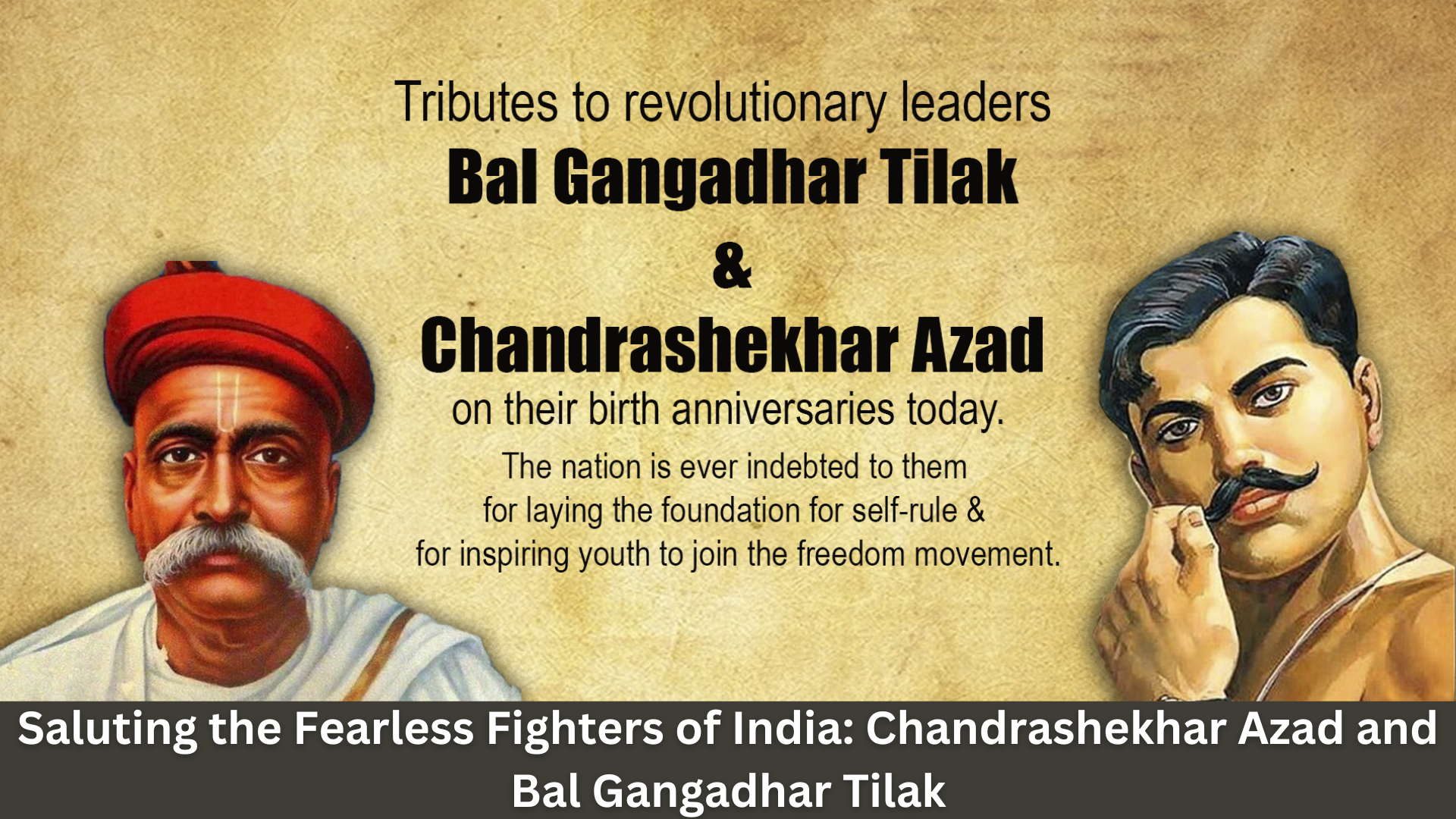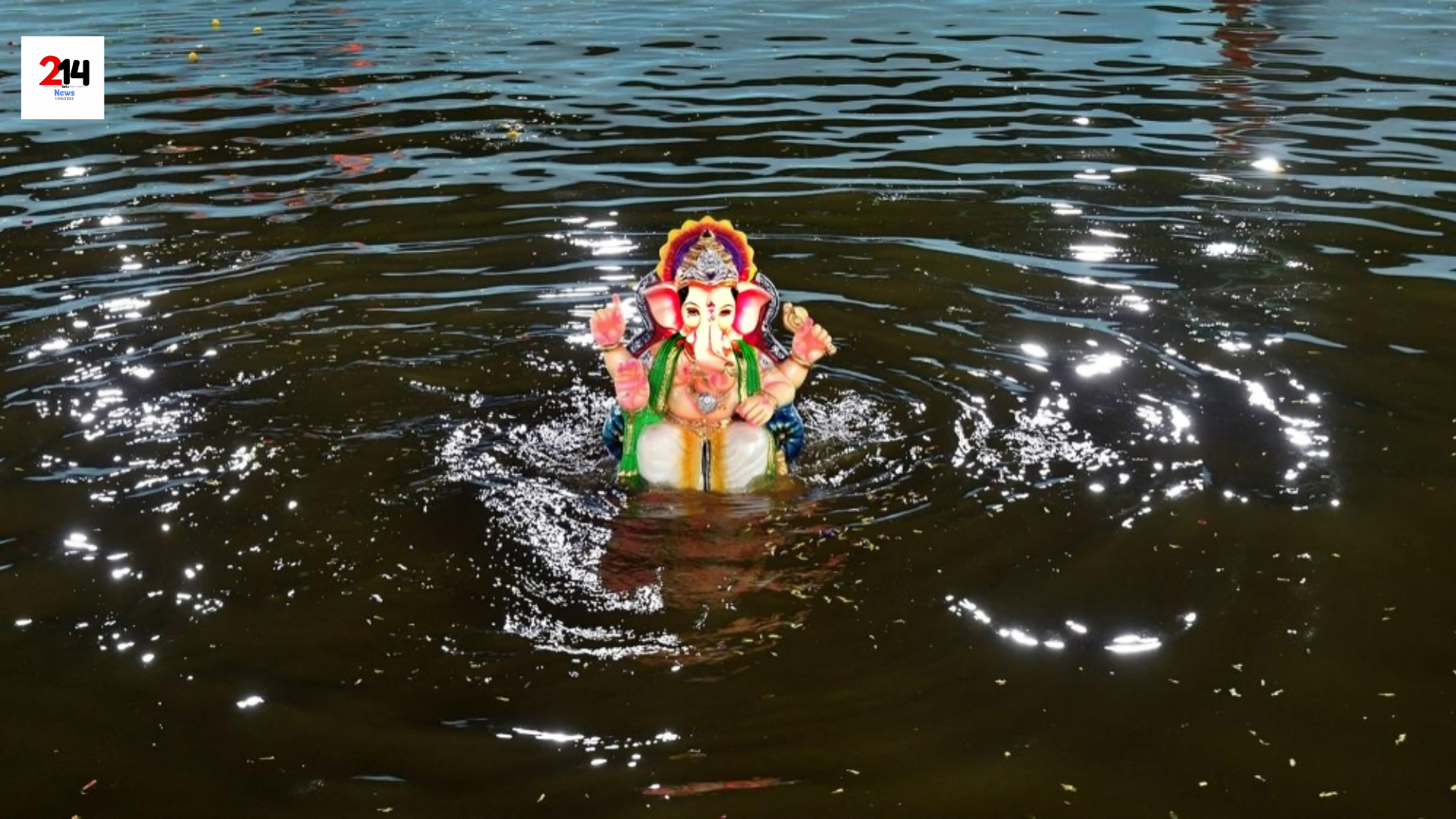
Today, we honor the birth anniversaries of two of India’s most valiant freedom fighters: Chandrashekhar Azad and Bal Gangadhar Tilak. Their resolute dedication and fearless actions have left an indelible mark on the history of India’s struggle for independence.
Chandrashekhar Azad
Birth and Early Life
- Born: July 23, 1906
- Place of Birth: Bhavra, Alirajpur District, Madhya Pradesh
Chandrashekhar Azad, originally named Chandrashekhar Tiwari, showed signs of his uncontrollable spirit from a young age. Inspired by the growing revolutionary activities in the country, he joined the freedom movement as a teenager.
Fearlessness and Contribution
Azad’s fearlessness was evident early on when he was arrested at the age of 15 for participating in revolutionary activities. During his trial, he boldly declared his name as “Azad” (the free), his father’s name as “Swatantrata” (independence), and his residence as “Jail”. This audacious declaration earned him the name by which he is now known.
He became a key figure in the Hindustan Socialist Republican Association (HSRA), participating in significant revolutionary acts, including the Kakori Train Robbery and an attempt to blow up the Viceroy’s train. Azad’s strategic brilliance and his commitment to the cause of independence made him a prominent figure in the freedom struggle.
Death and Legacy
Chandrashekhar Azad remained true to his vow of never being captured alive by the British. On February 27, 1931, surrounded by the British police in Alfred Park, Allahabad, he fought valiantly before taking his own life to avoid capture. His sacrifice inspired many to join the freedom movement, and Alfred Park was later renamed Chandrashekhar Azad Park in his honor.
Bal Gangadhar Tilak
Birth and Early Life
- Born: July 23, 1856
- Place of Birth: Ratnagiri, Maharashtra
Bal Gangadhar Tilak, fondly known as “Lokmanya” (accepted by the people), was a multifaceted personality—scholar, mathematician, philosopher, and an ardent nationalist. He was a key architect of modern India and a leading figure in the early stages of the Indian Independence Movement.
Fearlessness and Contribution
Tilak’s fearless advocacy for Swaraj (self-rule) was encapsulated in his famous proclamation, “Swaraj is my birthright and I shall have it.” His words inspired millions and sparked the desire for independence across India. He played a crucial role in forming the Indian Home Rule Movement and used his fiery speeches and writings to mobilize the masses.
Through the celebration of Ganesh Chaturthi and Shivaji Jayanti, Tilak fostered a sense of unity and national pride among Indians. His fearless journalism, particularly through his newspapers Kesari and Maratha, criticized British policies and awakened national consciousness.
Death and Legacy
Bal Gangadhar Tilak passed away on August 1, 1920. His death was mourned by millions who saw in him the embodiment of the struggle for freedom. His contributions to India’s independence movement are remembered and celebrated to this day.
Conclusion
Chandrashekhar Azad and Bal Gangadhar Tilak remain enduring symbols of India’s fight for freedom. Their fearless actions, profound thoughts, and unwavering dedication continue to inspire generations. As we celebrate their birth anniversaries, we salute these great fighters and pledge to uphold the values they cherished and fought for.
Modi Government Lifts 1966 Ban on Government Employees Participating in RSS Activities

